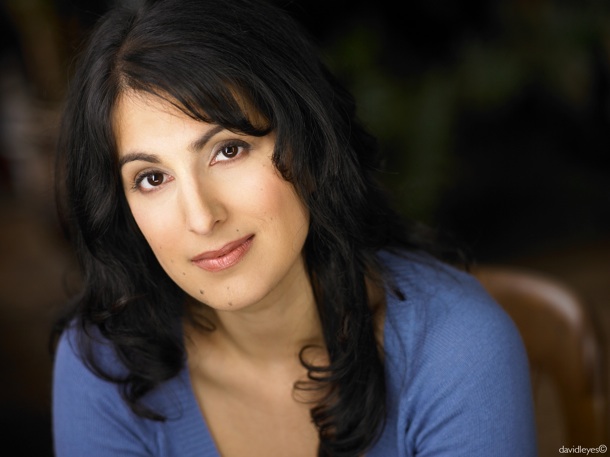Concert Review: Boston Musica Viva’s Satisfying “Role-Play”
Boston Musica Viva presented an invigorating (if early) conclusion to the season, providing an ear-catching snapshot of chamber music written in the last 30-plus years.
By Jonathan Blumhofer
Contemporary music is alive and well in Boston if you know where to look for it. Between the Boston Modern Orchestra Project, Callithumpian Consort, Sound Icon, and Juventas New Music Ensemble—to name just a few—the region boasts a very healthy scene, even if that robustness isn’t always reflected in the programming of Boston’s larger orchestras.
The cornerstone of the city’s new music groups is Boston Musica Viva (BMV), founded in 1969 by Richard Pittman. Their 44th season concluded on Sunday with two premieres on a program titled Role-Play, featuring music by Peter Child, Elliott Carter, Judith Weir, and Sebastian Currier. It was an invigorating (if early) conclusion to the season, providing an ear-catching snapshot of chamber music written in the last 30-plus years.
Peter Child’s 1979 Duo for Flute and Percussion opened the afternoon with a bracing dose of acerbic lyricism and timbral variety. Cast in four movements, the first three of which are relatively brief, it’s a compelling essay that makes plenty of demands on its two soloists—Sunday’s were flutist Ann Bobo and percussionist Robert Schulz—but never surrenders its focus to demonstrations of just technical prowess.
It’s often highly energetic: the middle movements, Two-Part Invention and Caprice, are vigorously driven, the first pairing the flute with vibraphone and the second with drums and temple blocks (Caprice, especially, made a strong impression with its wide range of percussive colors). But it’s also a piece that savors the primacy of melody, especially in the outer movements. The finale, Fantasy, is a substantial movement that received a performance notable for its delicate dynamic shadings and gripping structure, and Bobo’s reading of the opening bars of the Prelude set a focused tone that she and Schulz maintained throughout all four movements.
The first premiere of the afternoon (and a world premiere, at that) belonged to Scottish composer Judith Weir, who was in attendance and provided a short, spoken introduction to her Blue-Green Hill (2012). It’s a piece, she said, that developed out of some sketches of Scottish folk songs she prepared to be improvised by an ensemble of Western and Indian musicians about a decade ago. “No two performances ever sounded the same,” she noted, and that observation was the catalyst for the present composition.
To judge from its two performances on Sunday (Pittman and BMV repeated it once before intermission), it’s a welcome addition to the contemporary chamber music canon. Weir’s harmonic language is essentially diatonic but isn’t at all predictable. Plus, her music often incorporates all sorts of colorful touches. In Blue-Green Hill, one finds passages for violin and cello playing artificial harmonics octaves apart; doublings of cello and clarinet or flute and violin; dense, dissonant moments that suddenly turn spare and clear; and so forth.
The first of Blue-Green Hill’s three movements presents develops a miraculously simple gesture: a turn motive, first introduced by the cello. The second begins with an ostinato that marries the folk music style of Bartók with boogie-woogie before heading in a very different-sounding direction at the end. And the finale starts out with splashes of the piano’s high register before taking up an extended lyrical theme among the strings and winds and closes on a note of ambiguity.
Unsurprisingly, BMV’s second performance of Blue-Green Hill felt more secure than the first, though, if there had only been one reading to go on, the piece still made a strong impression. Both times, cellist Jan Müller-Szeraws’s velvety tone somewhat overwhelmed violinist Gabriella Diaz at the beginning of the opening movement, but they balanced successfully as the performances continued. Flutist Bobo and clarinetist William Kirkley easily maneuvered between their roles in the foreground and background, and pianist Geoffrey Burleson anchored everything with rhythmic precision and rich tonal shadings.
The afternoon’s other premiere (this a local one) came courtesy of the late Elliott Carter. Carter wrote his Double Trio in November 2011, after realizing at the age of 102, as Pittman amusingly relayed, that brass instruments can play softly, especially with mutes. Two trios—one comprising trumpet, cello, and piano, the other trombone, violin, and percussion—engage in a musical conversation that’s by turns raucous, subdued, frenzied, and entertaining. It’s perhaps not Carter’s deepest piece, but, with it’s spastic energy and charm, it’s thoroughly ingratiating. Pittman, BMV, and guests Eric Berlin (trumpet) and John Faieta (trombone) delivered a vibrant, assured performance.
Sebastian Currier’s 1991 scena-cum-song cycle, Vocalissimus, was the sole work on the second half of the program. In it, Currier takes Wallace Stevens’s four-line poem “To the Roaring Wind” and views it from 18 different “perspectives,” including those of a recluse, optimist, somnambulist, scientist, mystic, and lunatic. It’s a study in contrasts: one of Currier’s goals, he wrote, was to challenge the notion of a composer having a single, artistic “voice.” By and large, he succeeds in that effort here, though the potentially larger expressive purposes of Vocalissimus remain obscure and require repeated hearings.
And for hearing it, it’s hard to imagine topping Sunday’s performers. Though she started off a little steely, soprano Zorana Sadiq brought a tremendous range of color and expression to Currier’s vocal writing. This is a piece that—especially in live performance—benefits from a singer who can act, and Sadiq really inhabited these divergent roles, singing, chanting, nailing difficult leaps and awkward syncopations with what sounded like ease.
Currier’s instrumental writing in Vocalissimus is never short of inventive, even orchestral (though there are only six instruments), and Pittman and BMV seemed to revel in it, exploring the music’s many roles to the hilt. In all, Vocalissimus made for a thoroughly satisfying conclusion to Sunday’s program, a concert that was filled with the sense of musical discovery often sought in contemporary music settings but not always found.


